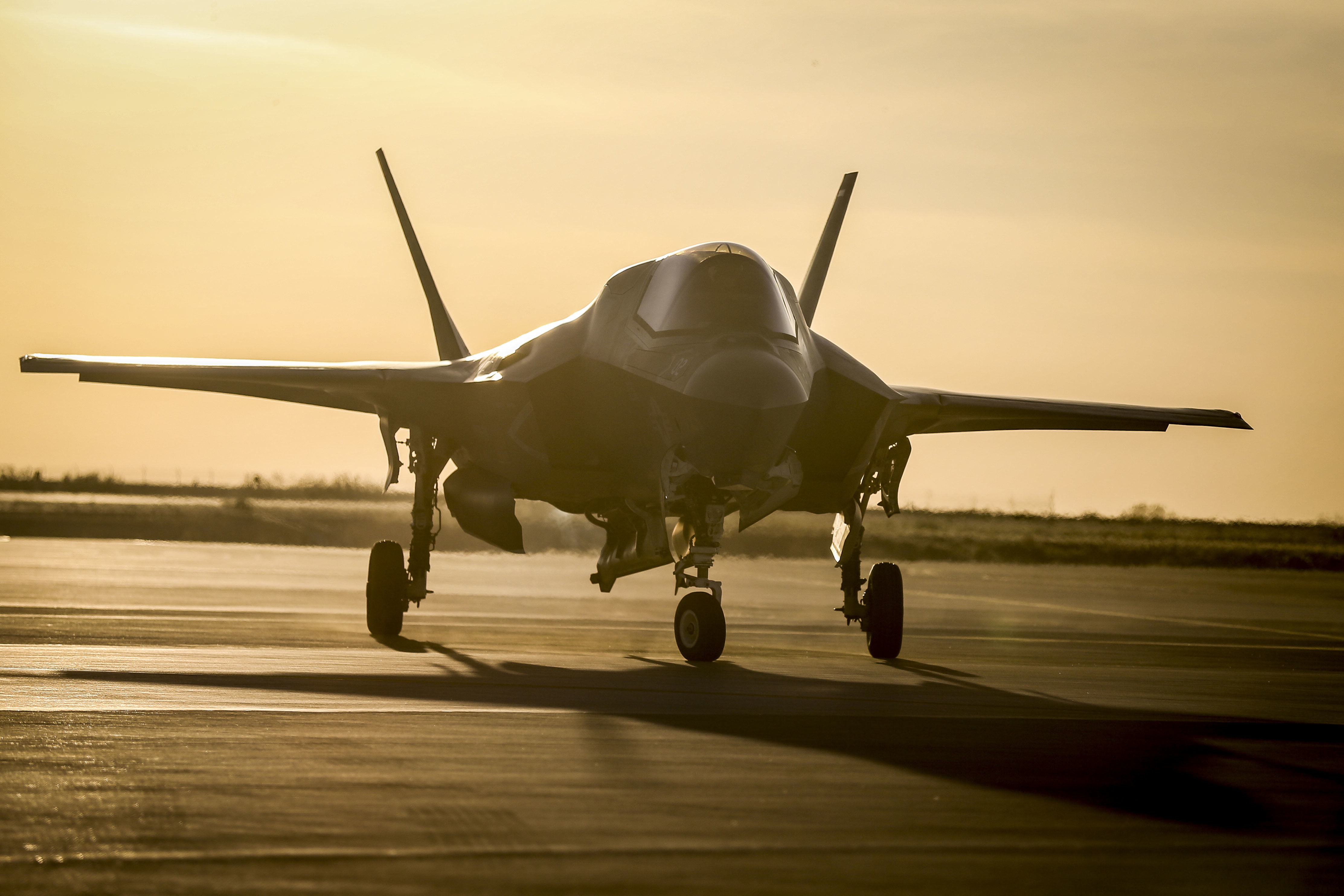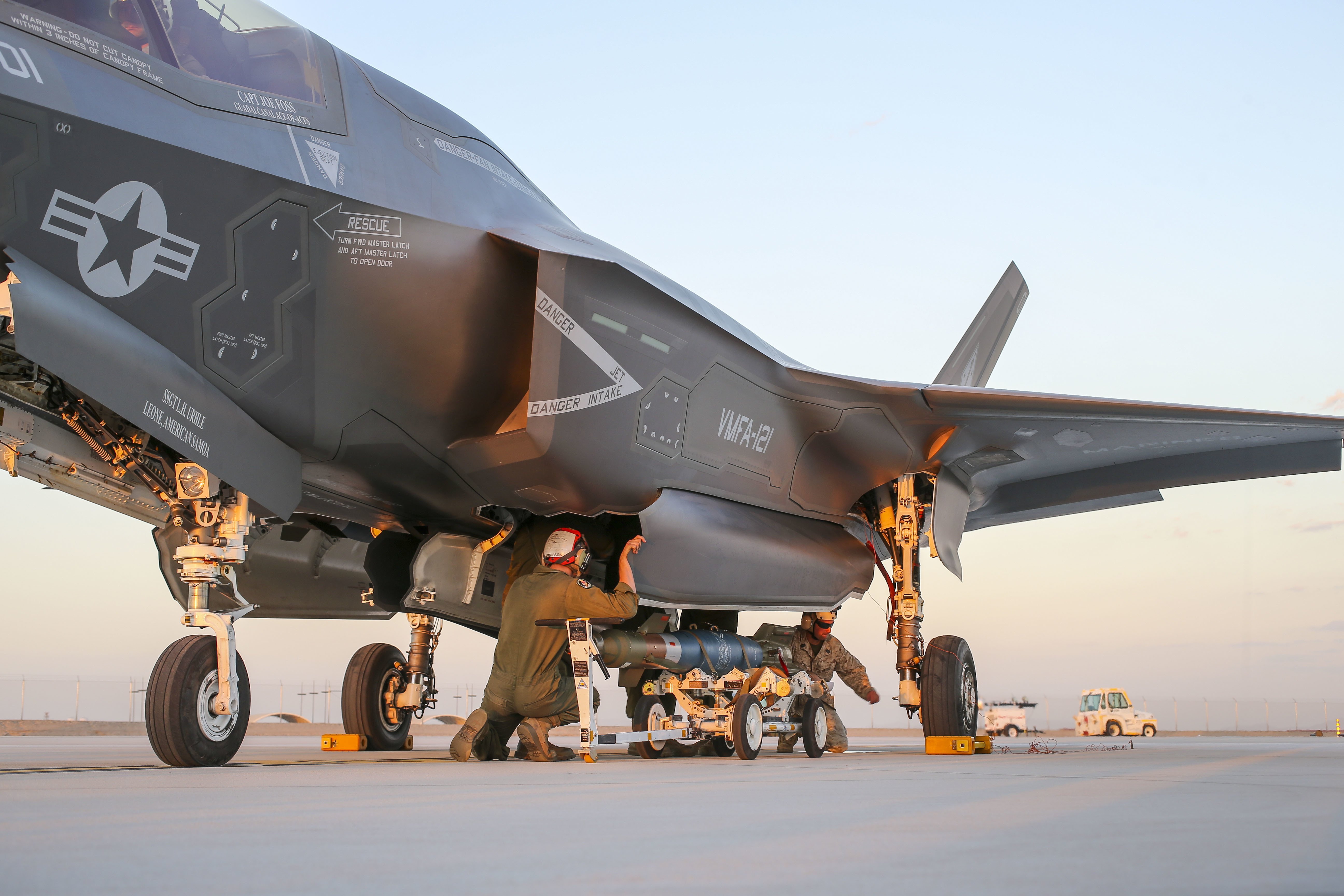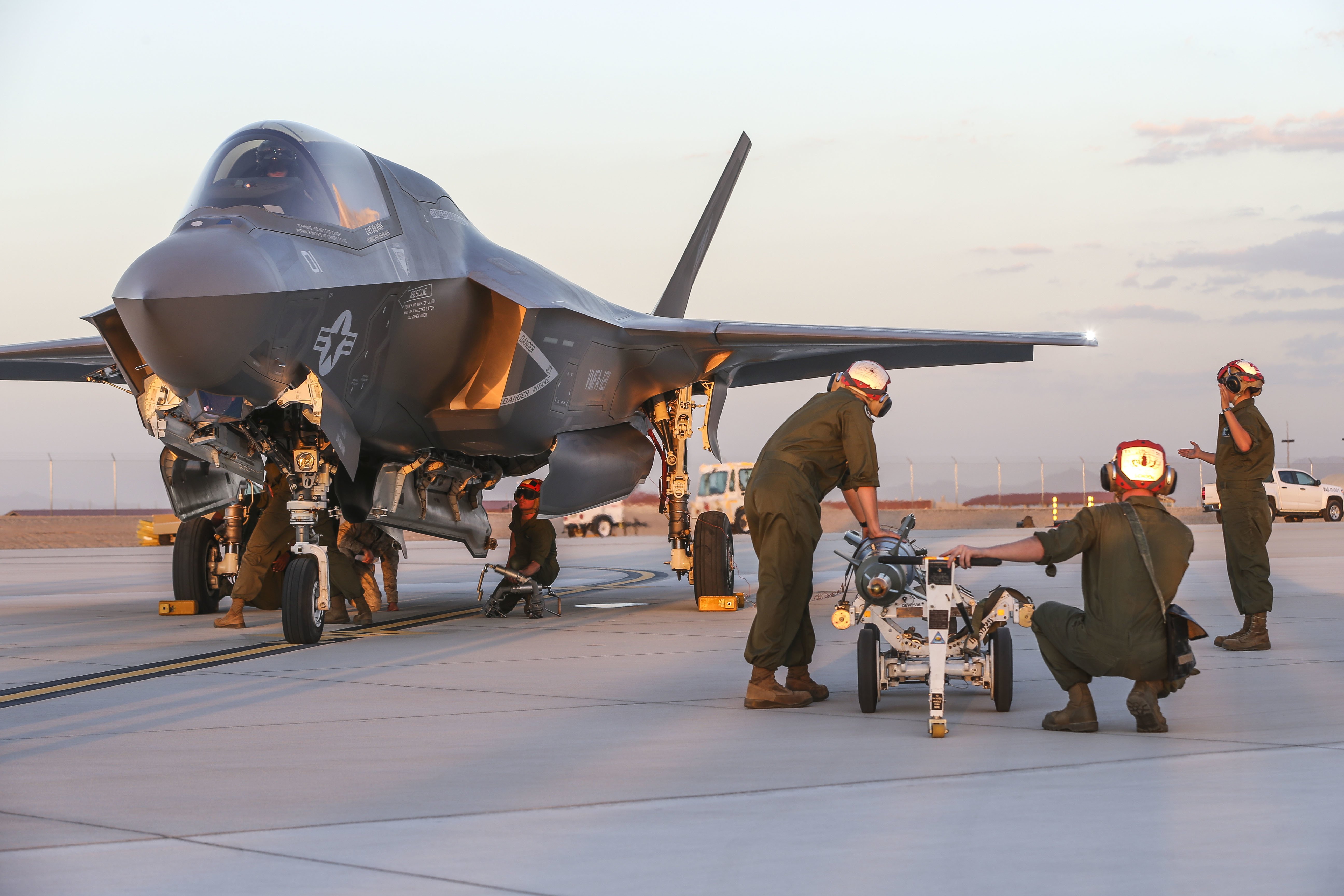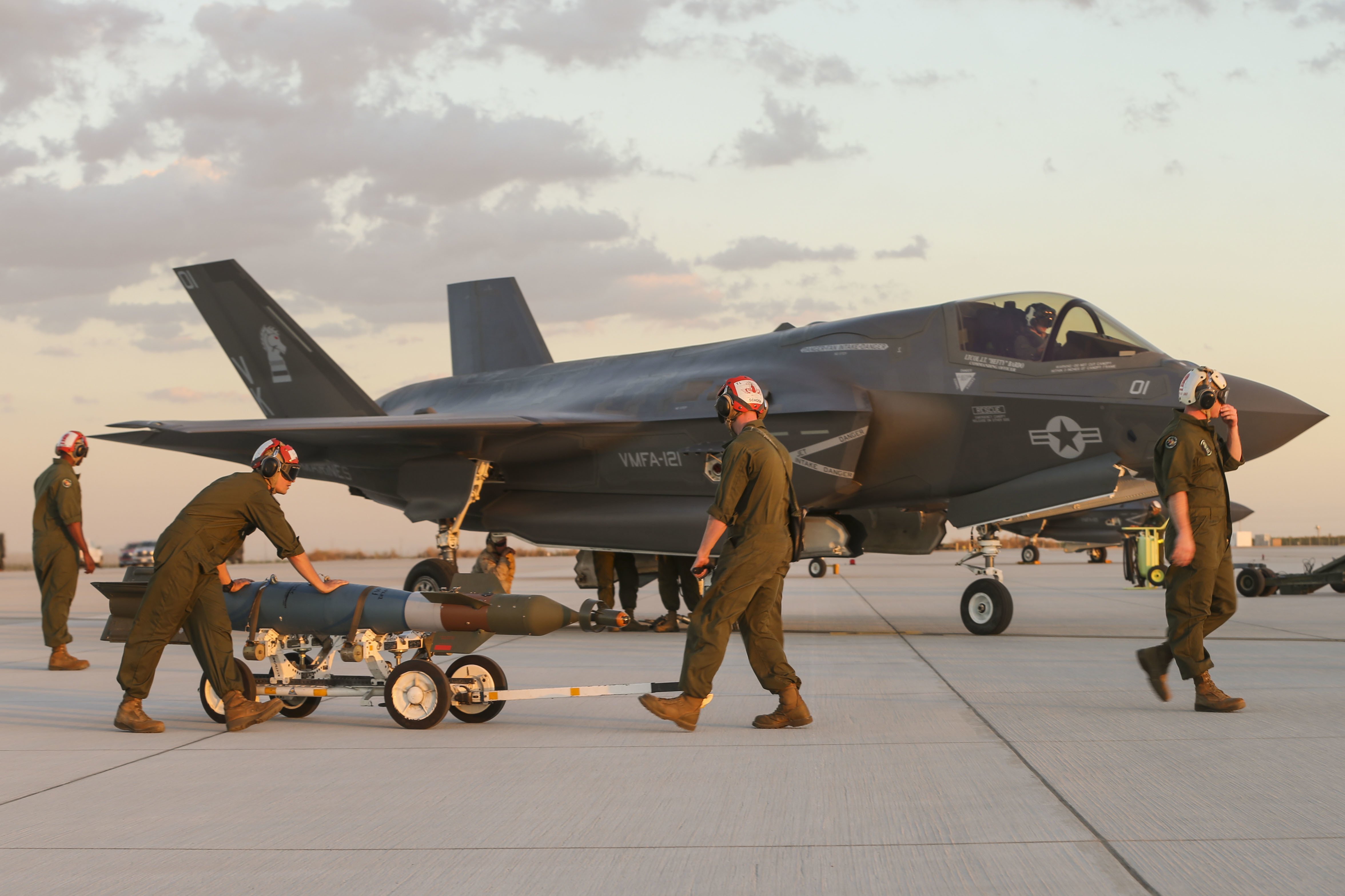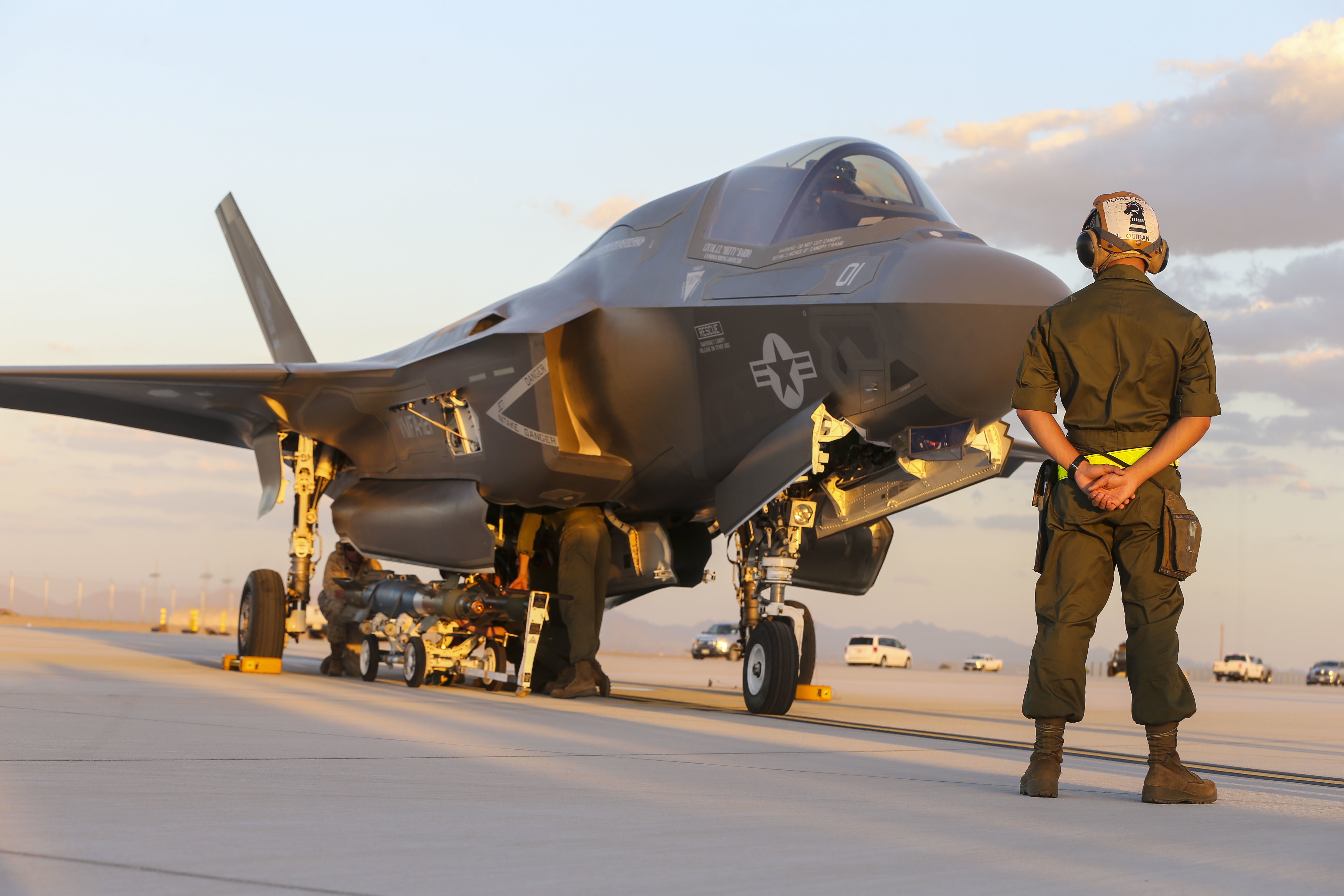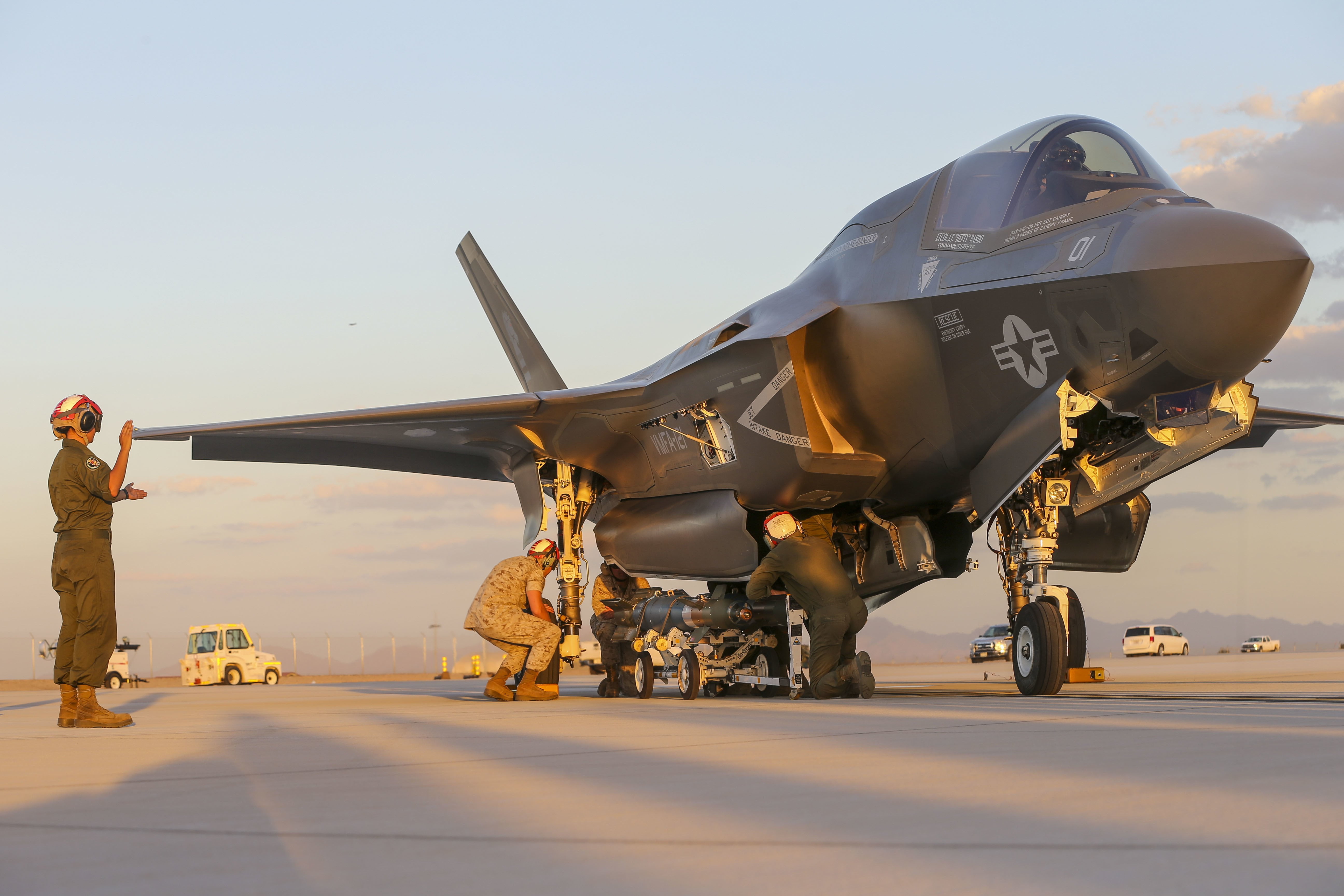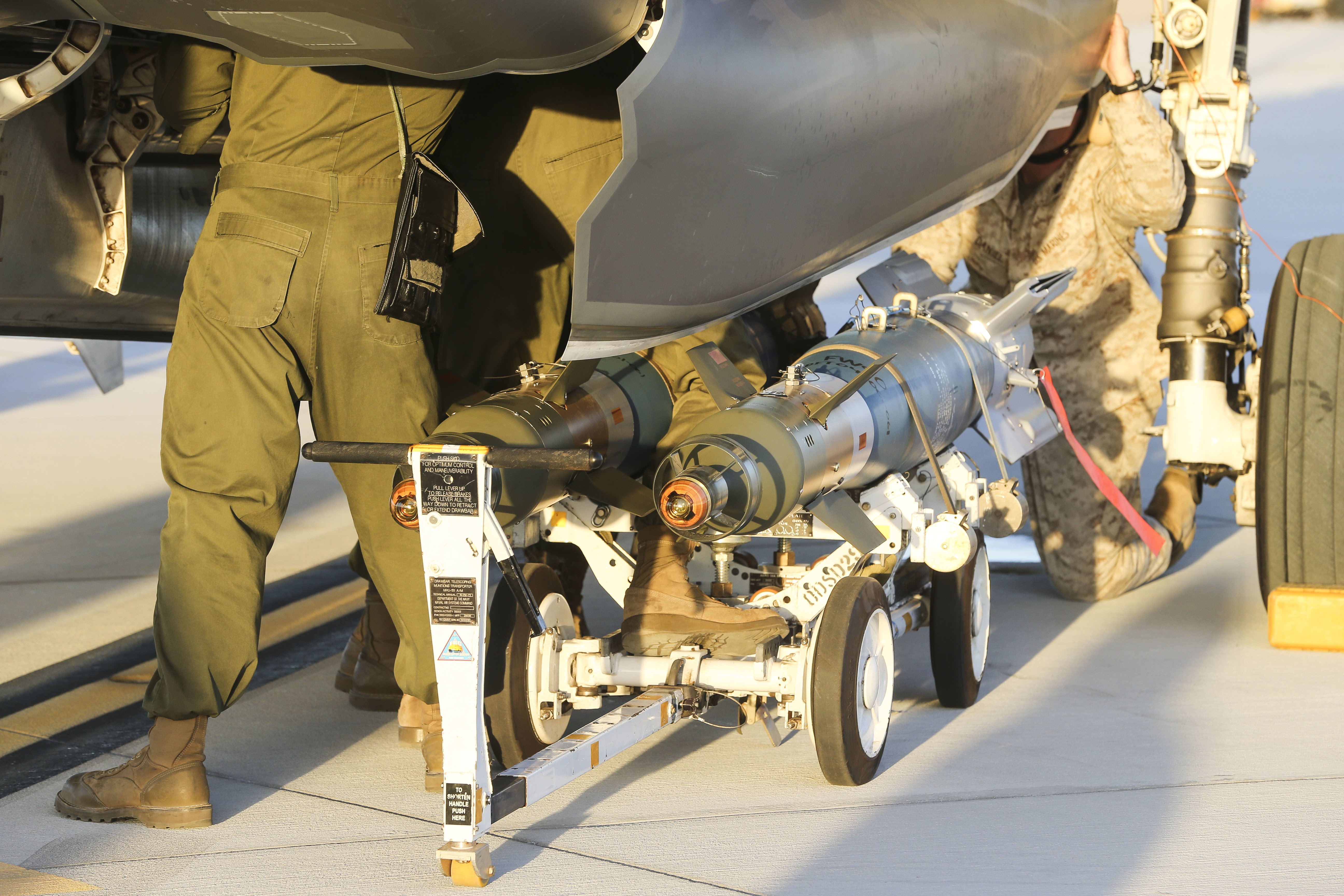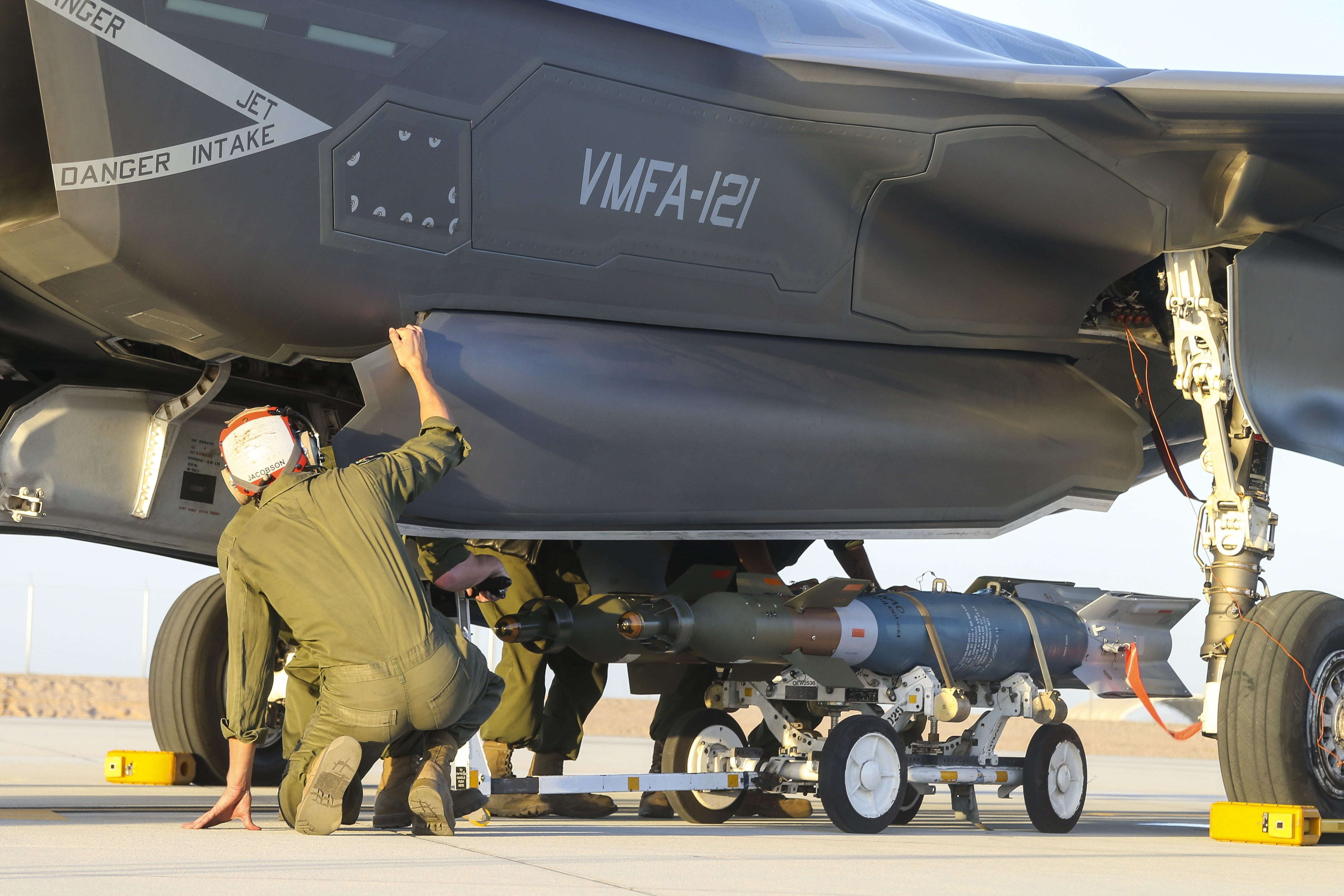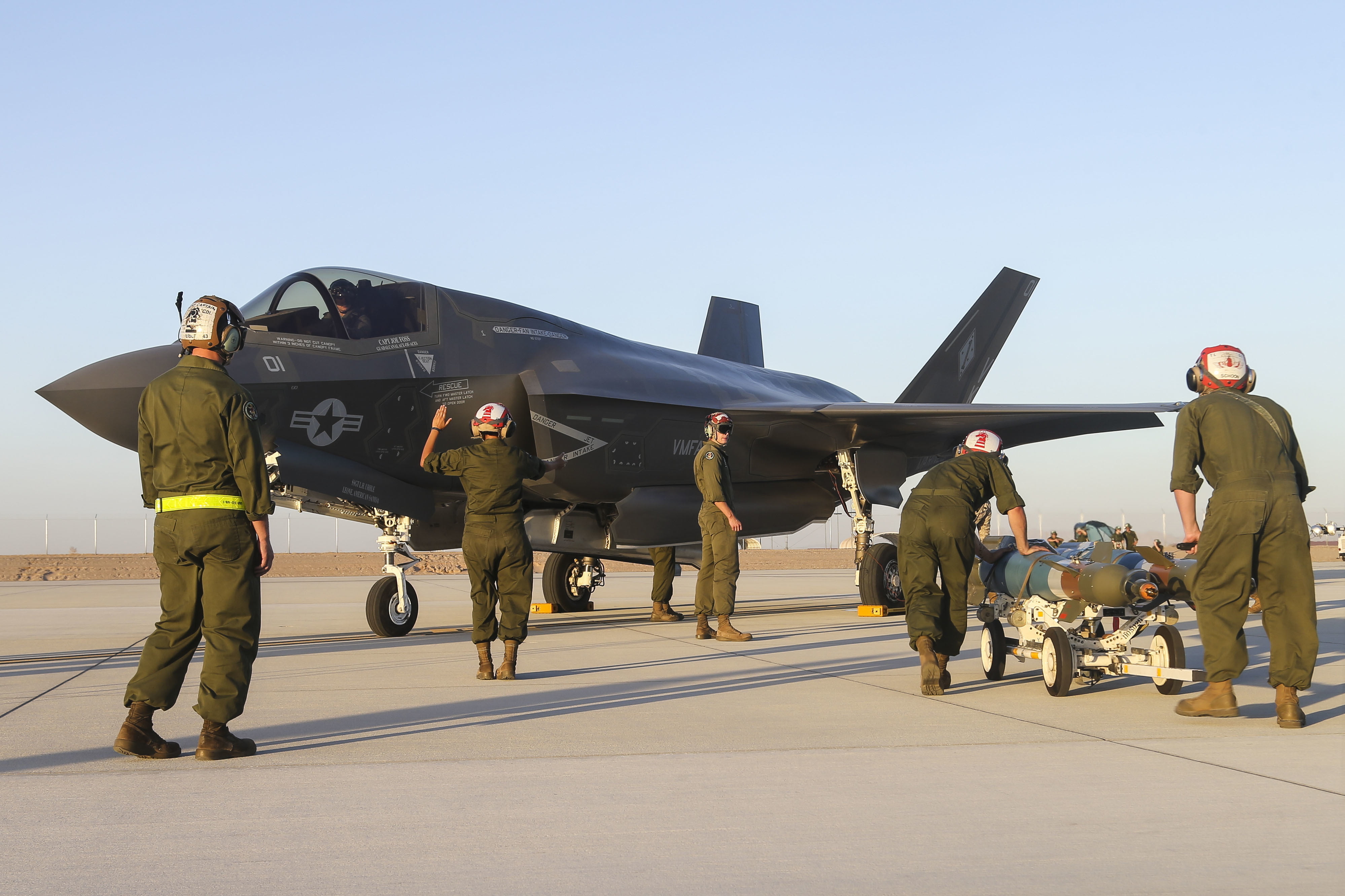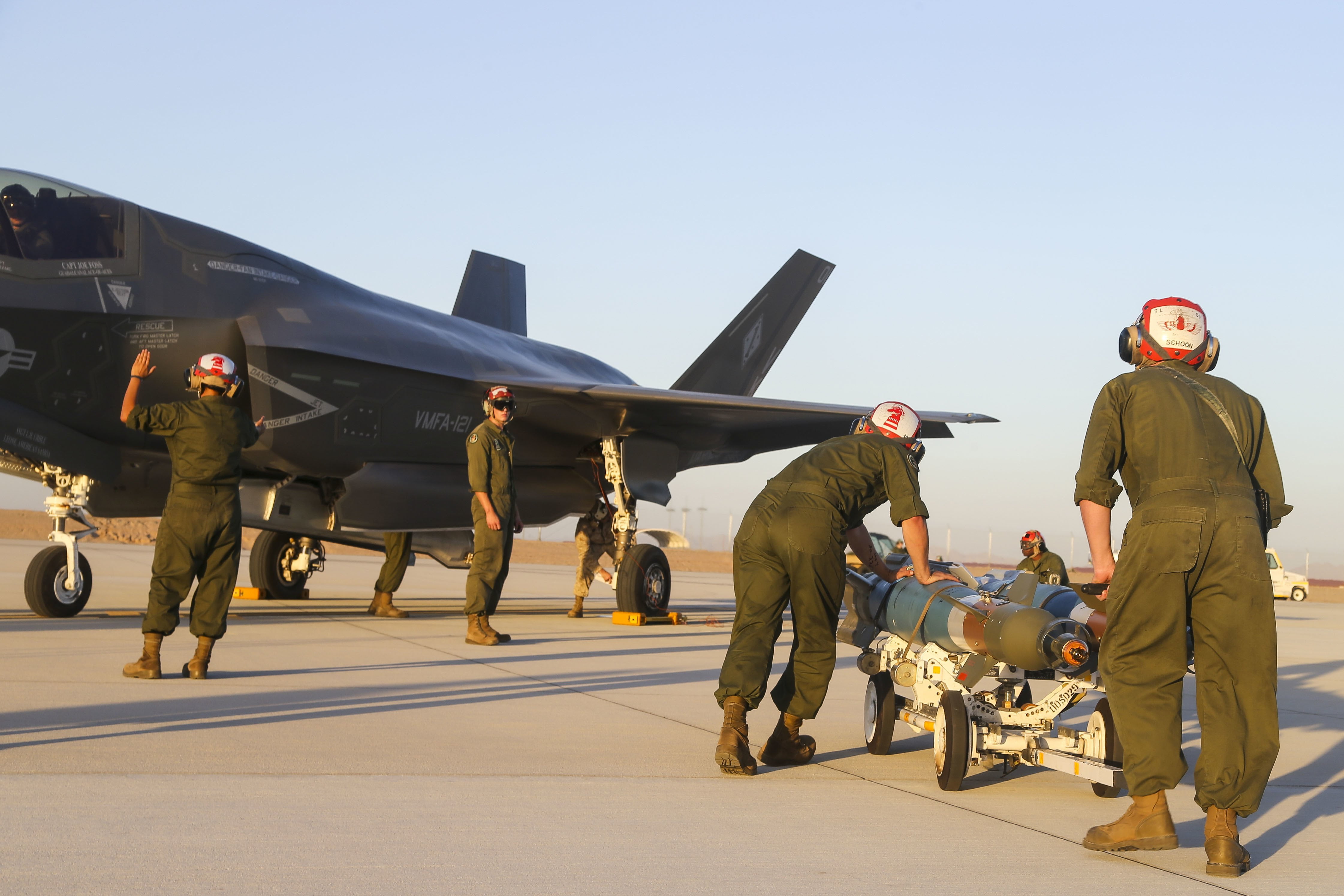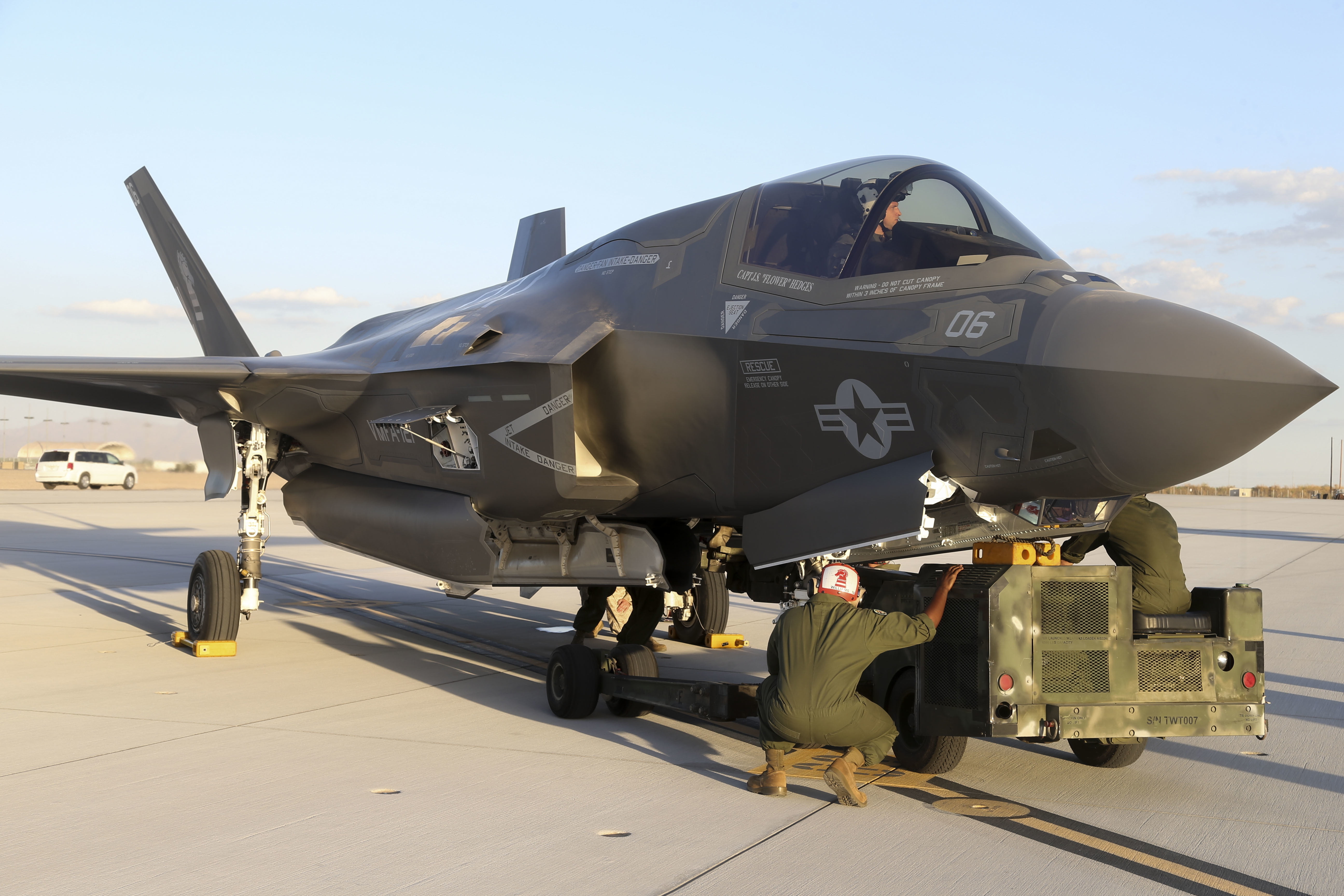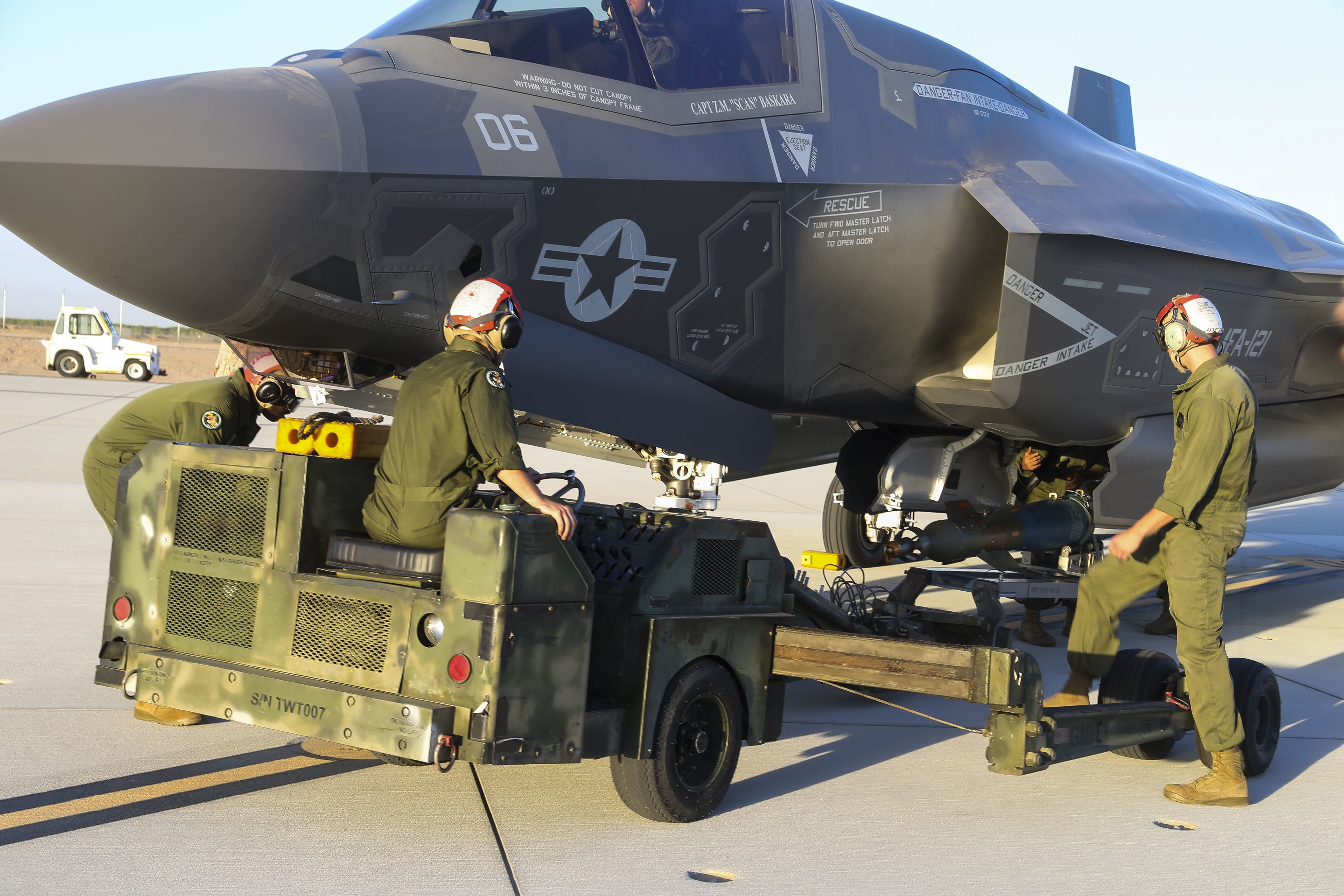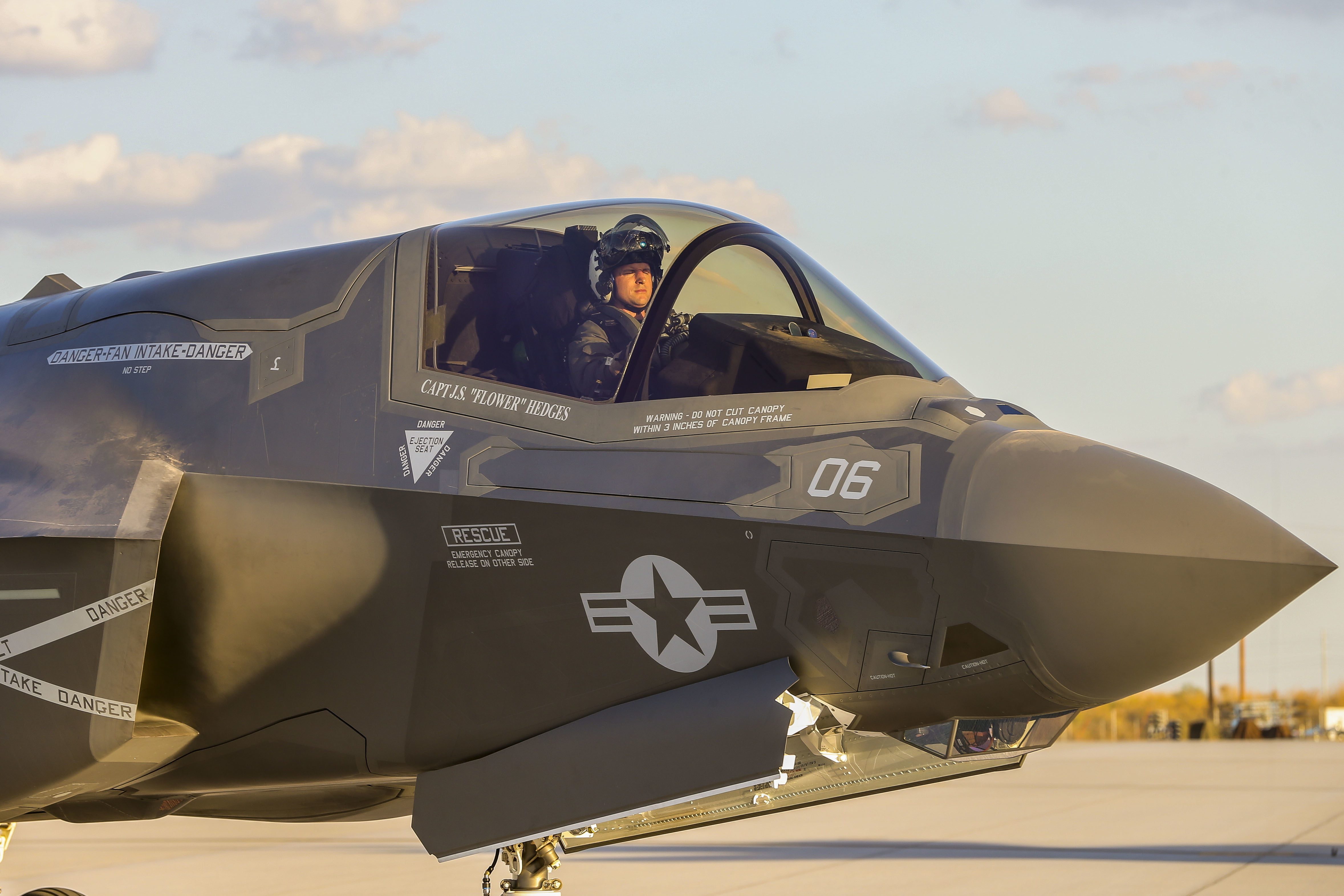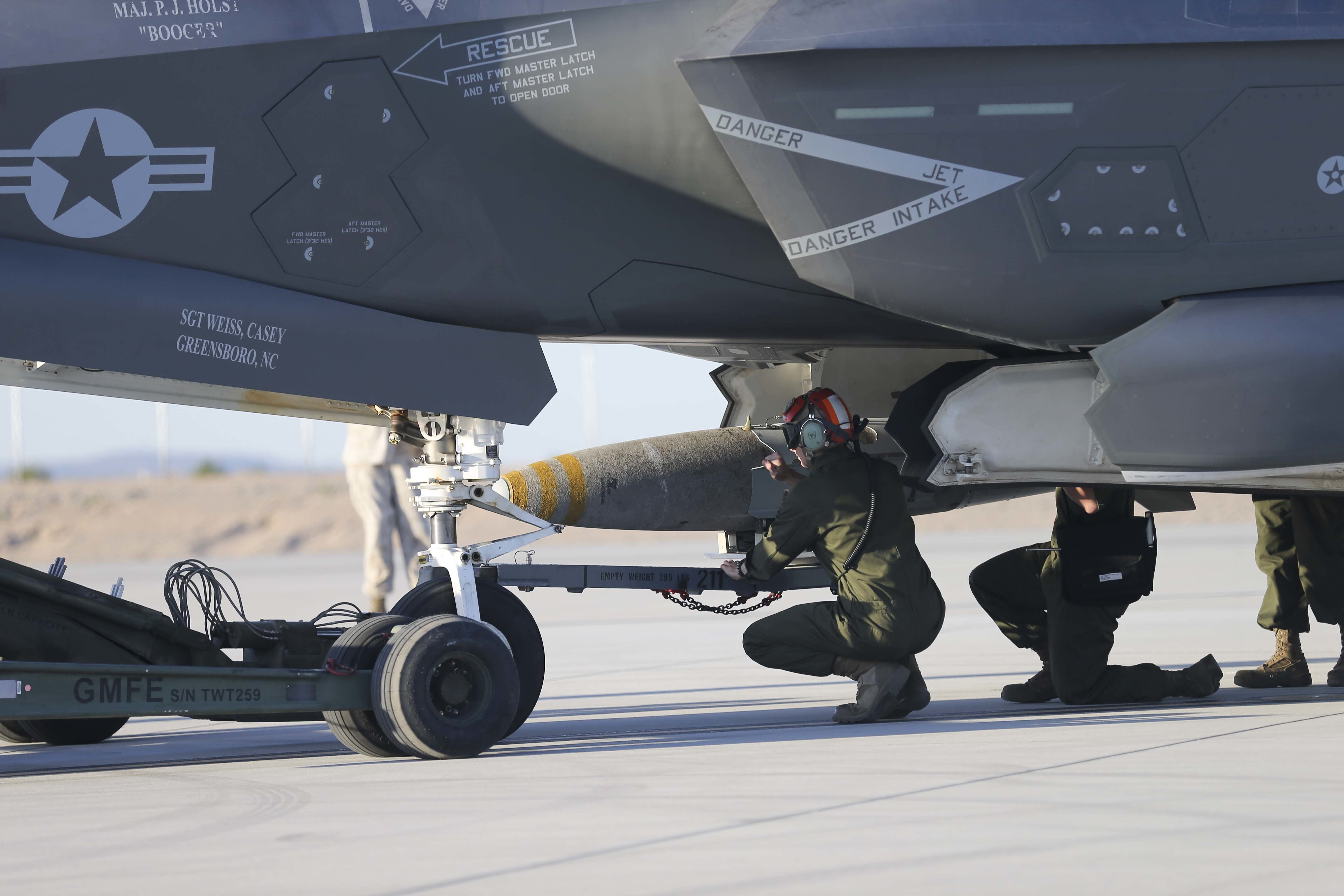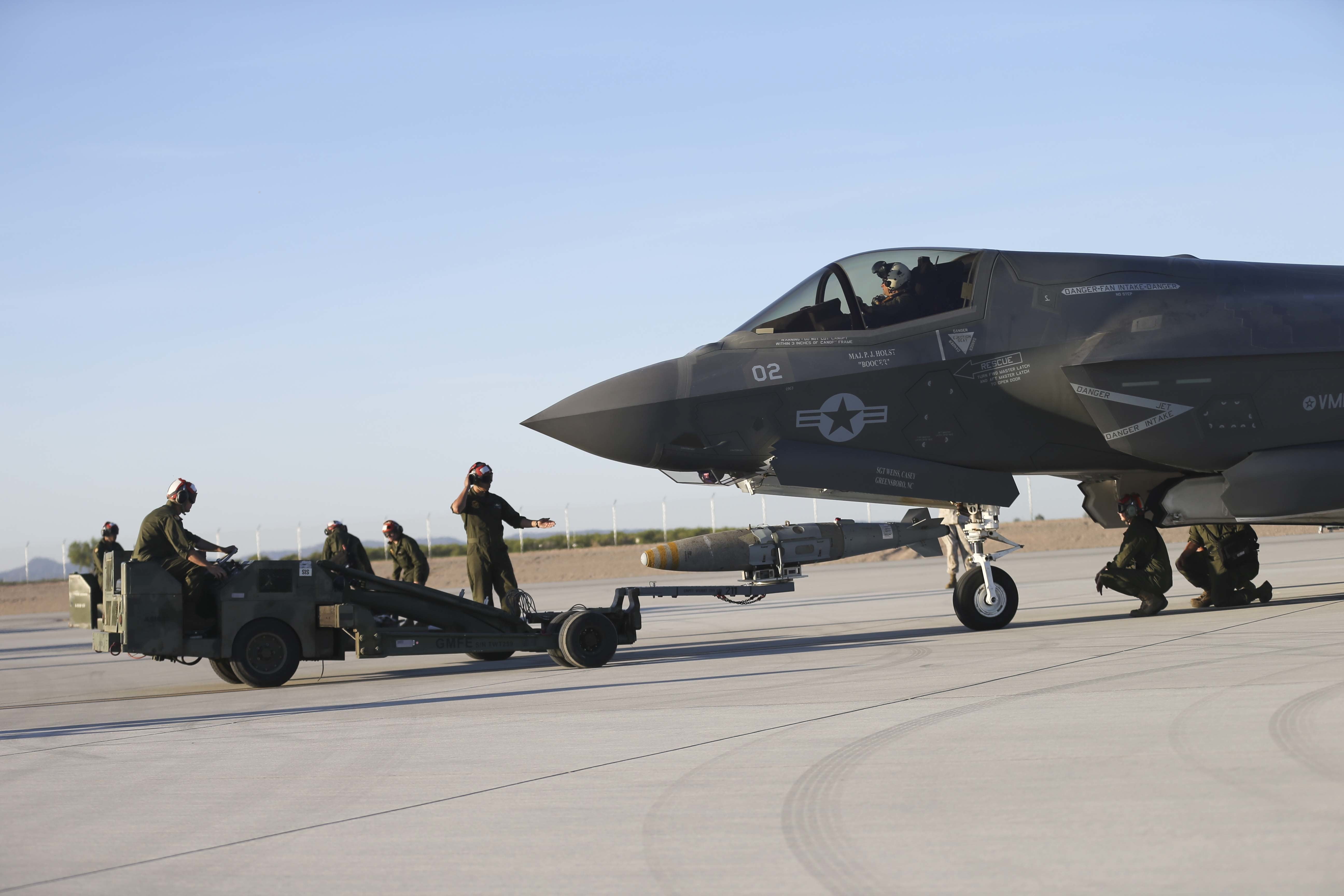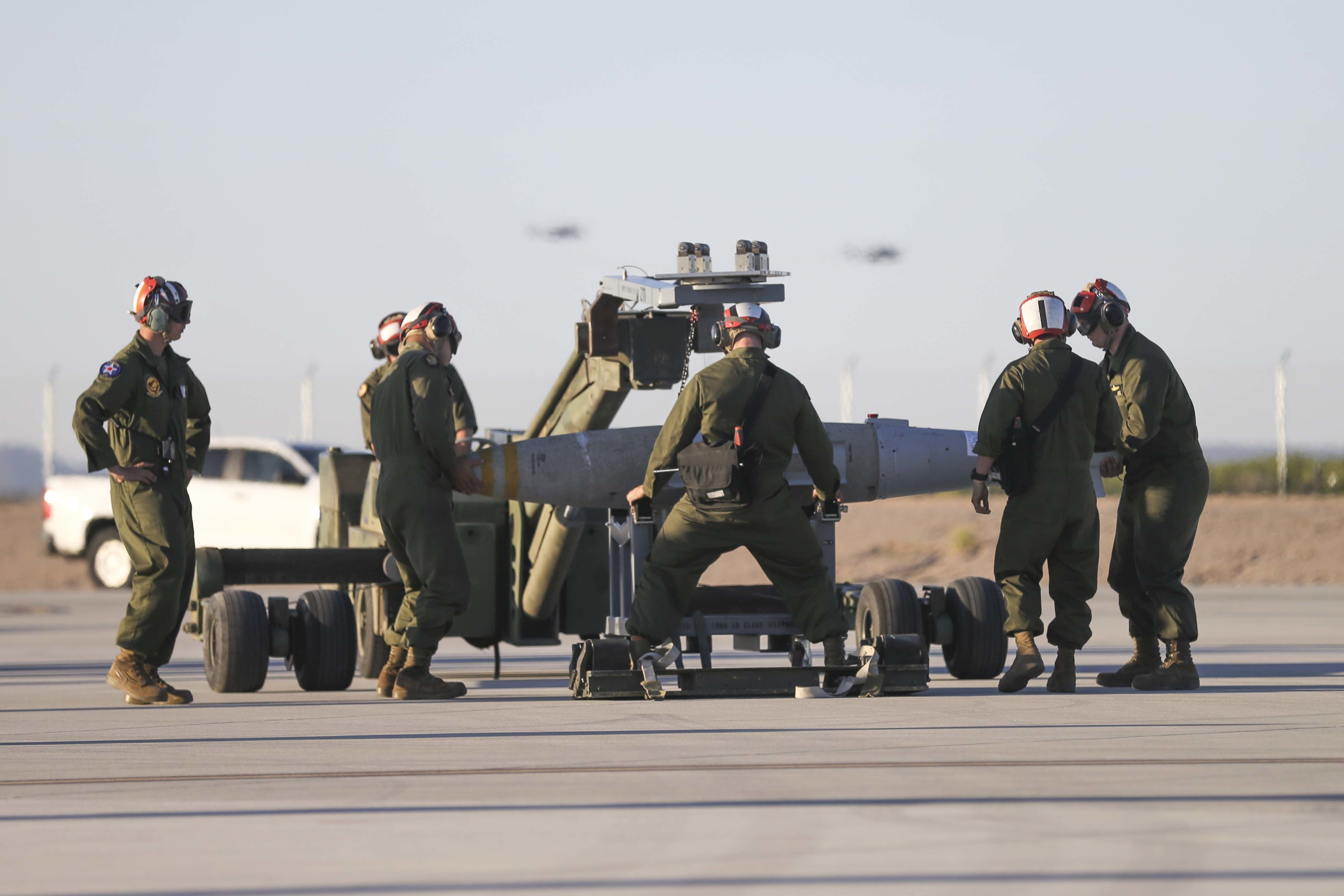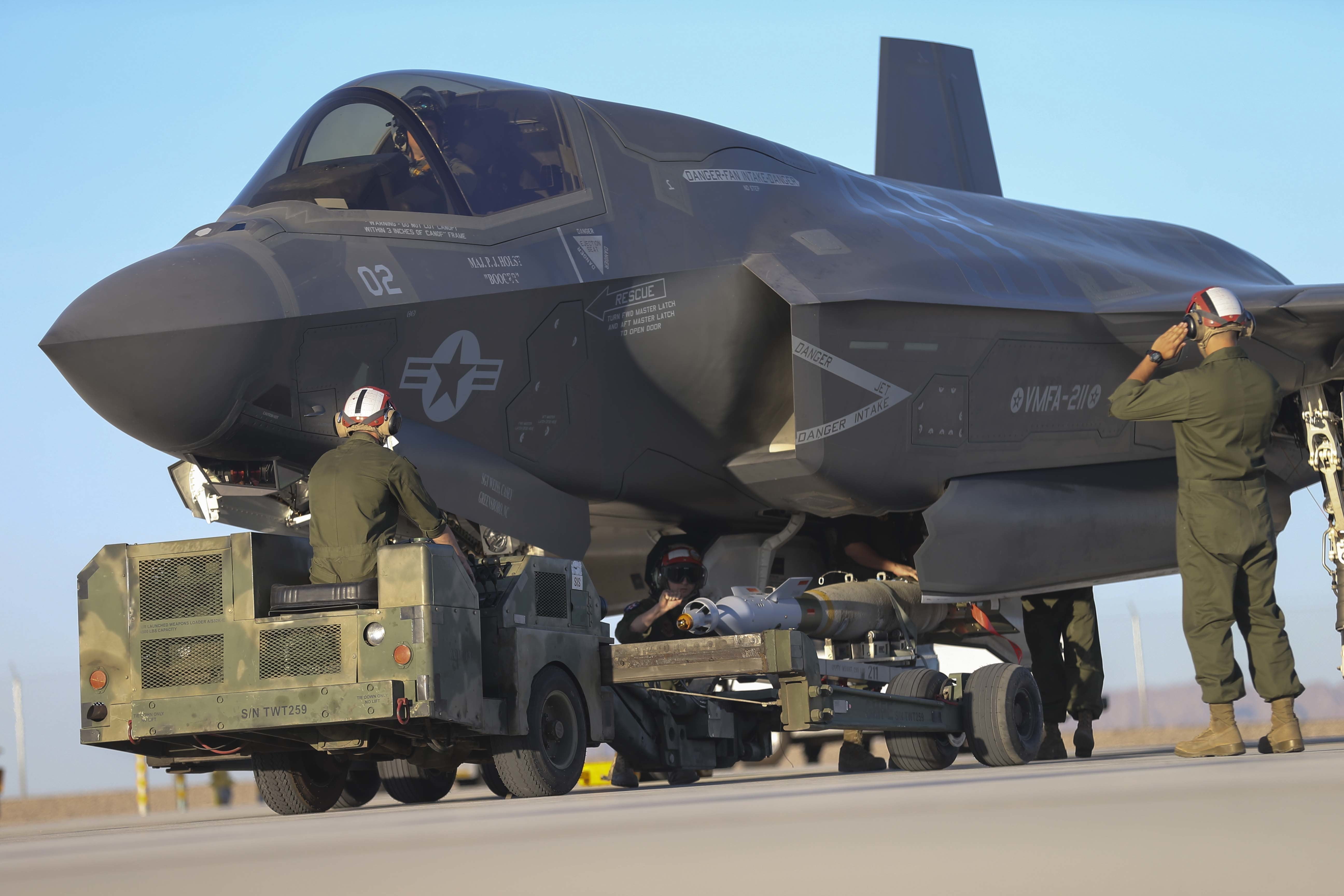By Robbin Laird
Over the past few weeks, I have been discussing with USAF and U.S. Navy officers, how the two services are training to shape greater synergy with regard to the integrated distributed force.
The fusing of multiple sensors via a common interactive self-healing web enhances the ability of the entire force, including key partners and allies, to engage cooperatively enemy targets in a time of conflict.
Interactive webs can be used for a wide range of purposes throughout the spectrum of conflict and are a key foundation for full spectrum crisis management.
To play their critical role when it comes to strike, whether kinetic or non-kinetic, this final layer of the web needs to have the highest standards of protection possible.
From the USAF and US Navy perspective, where does the USMC fit into the evolving kill web approach?
Clearly, one answer which has been given several times can be expressed in terms of one of the Marines key competence – bringing an integrated force to a mobile operational setting whether afloat or ashore.
It is important to consider a base afloat or ashore as part of the chessboard from a basing point of view.
Too often when one mentions basing, the mind goes quickly to a fixed air or ground base, but in the evolving strategic environment, an ability to work across a wide variety of basing options is crucial.
And no force in the world is more focused on how to do this than the USMC.
And with the arrival of the USS America class LHA, the amphibious fleet moves out from its greyhound bus role to being able to contribute fully to sea control in transit or in operations, thereby relieving the U.S. Navy large deck carriers from a primary protection role.
To be clear, when one is talking about a combat cloud, the processing power empowering webs comes from cloud processing power.
With a focus on interactive kill webs, the processing power is distributed.
The capability of the F-35s to hunt as a pack and through its CNI system and data fusion capabilities, the pack can work as one.
The integration of the F-35 into the Marine Corps and its ability to work with joint and coalition F-35s provides significant reach to F-35 empowered mobile bases afloat or ashore
When I last visited MAWTS-1 at MCAS Yuma, I had a chance to discuss the evolving focus on mobile basing and learned that indeed the US Navy and USAF were visitors to Yuma to discuss mobile basing.
Because the approach to mobile basing is being worked in the context of preparing for conflicts against full spectrum capable adversaries, in effect, the mobile basing approach will be about moving pieces on the kill web chessboard.
Recently, I had a chance to talk with Major Brian “Flubes” Hansell, MAWTS-1 F-35 Division Head, with regard to how the Marines are working the F-35 into their approach or better yet approaches to expeditionary basing.
I have a number of takeaways from my conversation with Major Hansell, which include points that he made, but also extrapolations from our conversation as well.
The first takeaway is that following a significant focus on the land wars in the past twenty years combined with the return to the sea, the Marines are shaping new capabilities to operate at sea and in a way that can have significant combat effects on the expanded battlespace.
And they are doing so from expeditionary bases, afloat and ashore.
According to Major Hansell: “The Marine Corps is a force committed to expeditionary operations. When it comes to F-35, we are focused on how best to operate the F-35 in the evolving expeditionary environment, and I think we are pushing the envelope more than other services and other partners in this regard.
“One of the reasons we are able to do this is because of our organizational culture. If you look at the history of the Marine Corps, that’s what we do.
“We are an expeditionary, forward-leaning service that prides itself in flexibility and adaptability.”
The second takeaway is that the coming of the F-35 to the USMC has expanded their ability to operate within a broader kill web and to both empower their expeditionary bases as well as to contribute to the broader kill web approach.
The Marine’s F-35s are part of the broader joint and coalition force of F-35s, and notably in the Pacific this extends the reach significantly of the Marine’s F-35s and brings greater situational awareness as well as reach to other strike platforms to the force operating from an expeditionary base as well as enhancing the kill web reach for the joint or coalition force.
As Major Hansell put it: “By being an expeditionary, forward-based service, we’re effectively extending the bounds of the kill web for the entire joint and coalition force.”
The third takeaway is how the concepts of operations empowers a kill web approach.
The F-35 is not just another combat asset, but at the heart of empowering an expeditionary kill web-enabled and enabling force.
On the one hand, the F-35 leads the wolfpack.
This was a concept which Secretary Wynne highlighted when I worked for him in DoD.
His perspective then is now reality and one which empowers an expeditionary force.
As Major Hansell put it: “During every course, we are lucky to have one of the lead software design engineers for the F-35 come out as a guest lecturer to teach our students the intricacies of data fusion.
“During one of these lectures, a student asked the engineer to compare the design methodology of the F-35 Lightning II to that of the F-22 Raptor.
“I like this anecdote because it is really insightful into how the F-35 fights.
“To paraphrase, this engineer explained that “the F-22 was designed to be the most lethal single-ship air dominance fighter ever designed. Period.
“The F-35, however, was able to leverage that experience to create a multi-role fighter designed from its very inception to hunt as a pack.”
Simply put, the F-35 does not tactically operate as a single aircraft.
It hunts as a network-enabled, cooperative four-ship fighting a fused picture, and was designed to do so from the very beginning.
“We hunt as a pack.
“Future upgrades may look to expand the size of the pack.”
The hunt concept and the configuration of the wolfpack is important not just in terms of understanding how the wolfpack can empower the ground insertion force with a mobile kill web capability but also in terms of configuration of aircraft on the sea base working both sea control and support to what then becomes a land base insertion force.
The fourth takeaway focuses on the reach not range point about the F-35 global enterprise.
The F-35 wolfpack has reach through its unique C2 and data fusion links into the joint and coalition force F-35s with which it can link and work.
And given the global enterprise, the coalition and joint partners are working seamlessly because of common TTP or Tactics, Techniques, and Procedures.
As Major Hansell put it: “From the very beginning we write a tactics manual that is distributed to every country that buys the F-35.
“This means that if I need to integrate with a coalition F-35 partner, I know they understand how to employ this aircraft, because they’re studying and practicing and training in the same manner that we are.
“And because we know how to integrate so well, we can distribute well in the extended battlespace as well.
“I’m completely integrated with the allied force into one seamless kill web via the F-35 as a global force enabler.”
The fifth takeaway is the evolving role of the amphibious task force in the sea control mission.
With the changing capabilities of strategic adversaries, sea control cannot be assumed but must be established.
With the coming of the F-35 to the amphibious force, the role of that force in sea control is expanding and when worked with large deck carriers can expand the capabilities of the afloat force’s ability to establish and exercise sea control.
With the coming of the USS America Class LHA, the large deck amphibious ship with its F-35s onboard is no longer a greyhound bus, but a significant contributor to sea control as well.
As Major Hansell noted: “The LHA and LHD can plug and play into the sea control concept. It’s absolutely something you would want if your mission is sea control.
“There is tremendous flexibility to either supplement the traditional Carrier Strike Group capability with that of an Expeditionary Strike Group, or even to combine an ESG alongside a CSG in order to mass combat capability into something like an expeditionary strike force.
“This provides the Navy-Marine Corps team with enhanced flexibility and lethality on the kill web chessboard.”
The sixth takeaway is that MAWTS-1 overall and the F-35 part of MAWTS-1 are clearly focusing on the integrated distributed force and how the Marines can both leverage an overall joint and coalition force able to operate in such a manner as well as how the Marines can maximize their contribution to the integrated distributed force.
Similar to the comments made in my recent interviews at Nellis, Major Hansell highlighted that MAWTS-1 was focusing upon shaping integrated force problem solving as a core aspect of their training.
According to Major Hansell, the CO of MAWTS-1, Colonel Gillette has put a priority on how to integrate as best as we can with the Navy, as well as the joint force.”
And for the F-35 period of instruction during all Weapons Schools, we focus a tremendous amount of effort on integrating with the joint force, more so than I ever did on a legacy platform.
“We really strive to make our graduates joint integrators, as well as naval integrators.
And I give Colonel Gillette (the current CO of MAWtS-1) all the credit in the world for moving us to that mindset and pushing us to learn how to operate in the evolving expeditionary environment.”
In short, the USMC provides a critical piece of the kill web puzzle, as the United States and its allies rework their warfighting and deterrence strategies to deal with peer competitors worldwide.
It is clearly a work in progress but new platforms are coming to the Marines, such as the CH-53K which clearly can support more effectively than the legacy asset, mobile basing, as well as the digital interoperability approach, which I have highlighted in recent interviews, which make the Marines more effectively woven into the kill web approach as well.
Also, see the following:
The Strategic Shift and Dynamic Targeting: Meeting the Challenge


